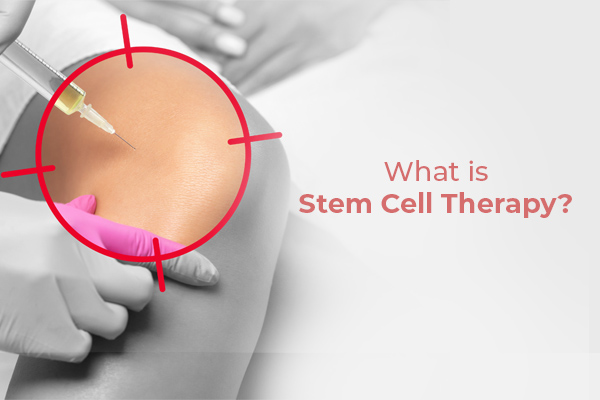
What Is Stem Cell Therapy? How Does It Work?
Have you heard about the life-saving potential and miraculous benefits of stem cells for your entire family’s health? No? Well, stem cells are the primary and master cells responsible for the body’s repair system. They can differentiate into a vast array of distinct cell types that carry out a variety of specialised tasks. Having said that, have you come across the term – stem cell therapy? This regenerative medicine is known to make use of our body’s stem cells to repair and fix damaged tissues. This innovative technique is at the forefront of scientific research and seeks to substantially enhance patient health conditions. Intrigued to know more about it?
In this extensive blog post, we’ll delve into the intricate details of stem cell therapy. Also, we will talk about the list of diseases treated by stem cell therapy. So, let’s get started.
Stem Cell Therapy: In A Nutshell
Stem cell therapy also referred to as regenerative medicine, encourages the healing process of damaged, malfunctioning, or wounded tissue by utilizing stem cells or their derivatives. As these stem cells can transform into specific cell types (like nerve or bone cells), stem cell therapy aims to maximise the body’s innate ability to repair. It provides patients with an enhanced quality of life.
As much as stem cell therapies are being marketed as a cure-all, blood malignancies and other blood disorders are being treated mostly using hematopoietic stem cells from bone marrow or umbilical cord blood. This is referred to as a hematopoietic stem cell transplant (HSCT) or bone marrow transplant (BMT).
How Does It Work?
Stem cells are special because no other cell in our body can differentiate into a new cell. They can be manipulated to be blood cells, brain cells, heart muscle cells or bone cells. The regenerative treatment or therapy works by generating new healthy cells to replace the ones affected by disease.
Different Types Of Stem Cell Therapy
For cell-based therapy, there are two types of stem cells available:
(1) Autologous, or self-to-self therapy, which uses the patient’s cells
(2) Allogeneic, or using cells from a healthy donor for the treatment.
Benefits Of Stem Cell Therapy
- Research indicates that stem cell therapy may be useful in the treatment of multiple sclerosis, diabetes, Parkinson’s disease, and arthritis.
- After injuries or surgeries, stem cells accelerate the healing process by encouraging the development of new blood vessels and tissue regeneration.
- Stem cell therapy may be used in some situations to substitute invasive procedures like organ or joint replacements.
Which Diseases Can Cord Blood Stem Cells Treat?
This is the complete list of diseases treated by stem cells, approved by the FDA over the last thirty years.



Scientists are still studying the possibilities of stem cells in transplantation and regenerative medicine. Despite all of the advantages, there are still constraints to stem cell therapy. Let’s get into the deets.
Side Effects Of Stem Cell Therapy
Some potential adverse effects of stem cell therapy include:
- There is a chance of infection at the injection or transplant site, just like with any medical surgery.
- The recipient’s immune system can reject stem cells obtained from a donor.
- Uncontrolled stem cell proliferation may lead to tumour development.
LifeCell Community Stem Cell Banking- Why Is It A Viable Option?
Community banking offers a combination of both – the privilege of a private bank and the common pool sharing of a public bank. Let’s discuss how LifeCell stem cell banking is a reliable option.
- LifeCell’s Community Cord Blood Banking allows the sharing of preserved umbilical cord stem cells from a common pool among the community members.
- It ensures complete protection for the child, siblings, parents, and maternal & paternal grandparents from the impact of more than 80+ disorders treatable by stem cells.
- The members gain quick, free access to the huge inventory of over 75K qualified and consented units in LifeCell’s registry. It provides a >97% probability of finding an Indian-origin best stem cell match.
- Additionally, LifeCell offers unlimited retrievals from their cord blood units readily available for community access in the LifeCell Registry at no extra cost.
- They provide free HLA typing to assist you in finding a compatible donor from their repository if your family requires a stem cell transplant.
Conclusion
Stem cell therapy is revolutionising medical treatment, offering new hope in the fight against many previously untreatable diseases and blood disorders. The regenerative capabilities of stem cells have marked a significant milestone in medical science.
However, the success of stem cell therapy often hinges on timely intervention, which can be stressful when searching for a suitable stem cell donor. This is where LifeCell’s community stem cell banking comes in. By enrolling in LifeCell’s BabyCord, there is no last-minute scramble for a donor, mitigating the anxiety associated with traditional donor searches.
Since umbilical cord blood is collected in advance, tested, and preserved, it ensures critical stem cells are readily available in times of need. Hence, there is no need to worry about the donor backing off at the last minute. Furthermore, you gain direct access to as many as 75,000+ qualified Indian-origin cord blood units for your entire family. This means that if there’s a need, you have a >97% chance of finding a match in LifeCell’s registry. It also offers free, unlimited sample retrievals and has multiple plans to choose from. Want to explore more? Then, visit their website www.lifecell.in or call us at 1800 266 5533.
Product Recommendations
- BabyCord
- StemMatch
- FamilyFloater
Also Read
- Top 10 Stem Cell Banks In India
- Are Stem Cells Good Or Bad? Myths About Stem Cells, Debunked
- A Deep Dive Into The State Of Childhood Cancers In India
Tags: cord blood banking, cord blood transplantation, stem cell banking, cord blood
